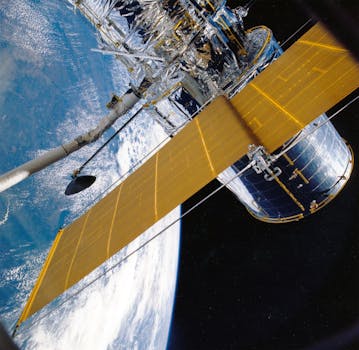Future of Satellites: Revolutionizing Global Communication and Exploration
The future of satellites holds tremendous potential for transforming global communication, exploration, and our understanding of the universe. With advancements in technology, satellites are becoming more accessible, efficient, and powerful, paving the way for a new era in space-based applications.

Future of Satellites: Revolutionizing Global Communication and Exploration
The future of satellites holds tremendous potential for transforming global communication, exploration, and our understanding of the universe. With advancements in technology, satellites are becoming more accessible, efficient, and powerful, paving the way for a new era in space-based applications. The Future of satellites is an exciting and rapidly evolving field, with new developments and innovations emerging regularly.
One of the most significant trends in the future of satellites is the proliferation of small satellites, also known as CubeSats. These tiny satellites, which are often no larger than a shoebox, are relatively inexpensive to build and launch, making them an attractive option for researchers, startups, and governments. Small satellites are being used for a wide range of applications, including Earth observation, communication, and scientific research.
Advancements in Satellite Technology
Advances in satellite technology are driving the growth and development of the satellite industry. Improvements in materials, propulsion systems, and electronics are enabling the creation of more powerful, efficient, and durable satellites. For example, the use of advanced materials like carbon fiber and titanium is allowing satellites to be built lighter and stronger, while new propulsion systems are enabling them to maneuver more efficiently in space.
Another key area of advancement is in the field of satellite communications. New technologies like Ka-band and laser communication are enabling faster and more secure data transmission, while the development of satellite constellations is providing global coverage and connectivity. These advancements are revolutionizing the way we communicate, enabling real-time connectivity and data transfer between remote locations and urban centers.
Applications of Satellites in the Future
The future of satellites holds tremendous potential for transforming a wide range of industries and applications. One of the most significant areas of growth is in the field of Earth observation, where satellites are being used to monitor climate change, track natural disasters, and manage natural resources. Satellites are also being used to provide internet connectivity to remote and underserved communities, bridging the digital divide and enabling access to education, healthcare, and economic opportunities.
In addition to these applications, satellites are also being used for scientific research, exploration, and development. For example, satellites are being used to study the universe, monitor the environment, and search for signs of life beyond Earth. The future of satellites is also likely to involve the development of new space-based applications, such as satellite-based solar power, space tourism, and asteroid mining.
Conclusion
In conclusion, the future of satellites is a rapidly evolving and exciting field, with tremendous potential for transforming global communication, exploration, and our understanding of the universe. With advancements in technology, satellites are becoming more accessible, efficient, and powerful, paving the way for a new era in space-based applications. As we look to the future, it is clear that satellites will play an increasingly important role in shaping our world and our place in the universe.




